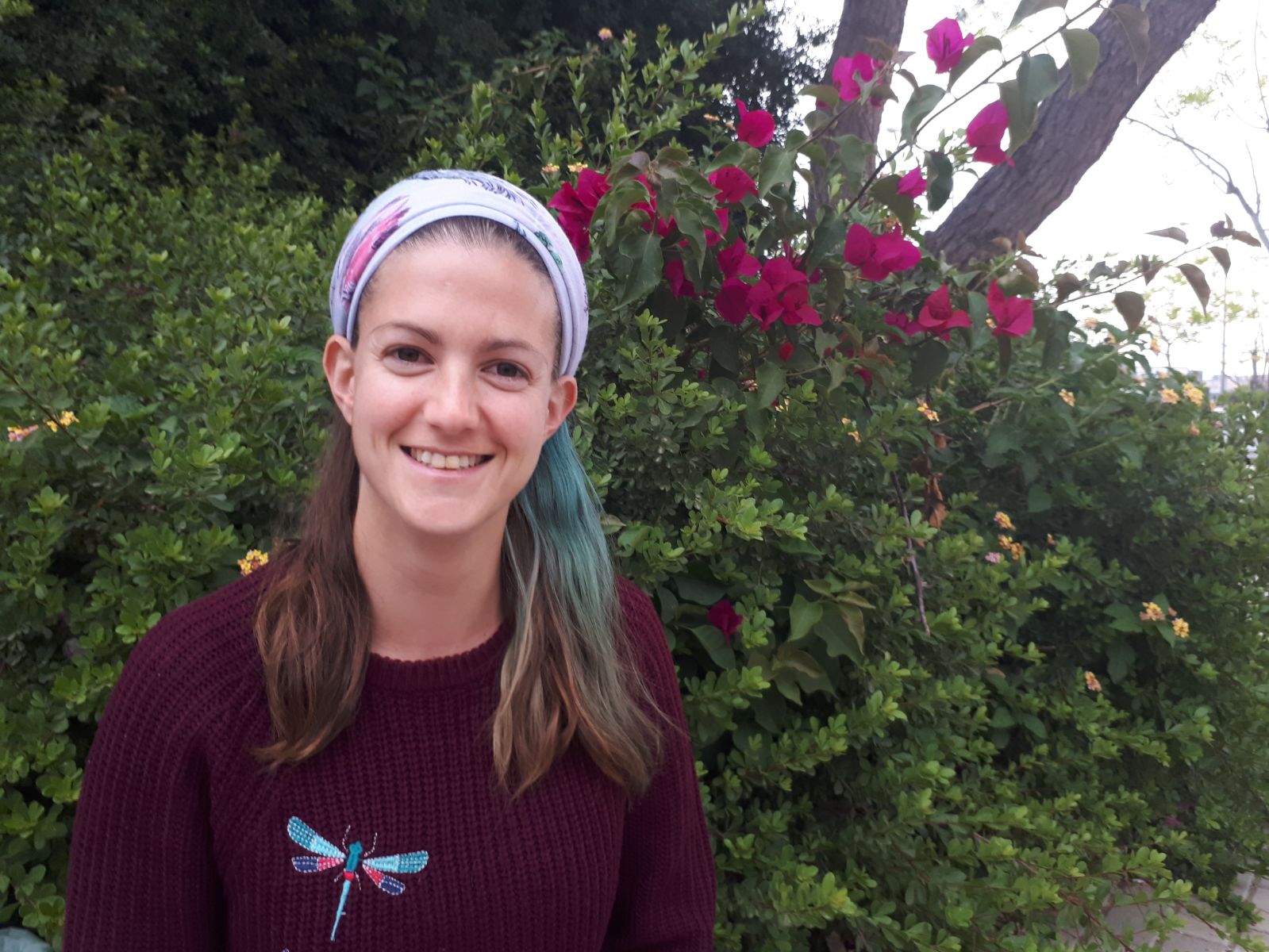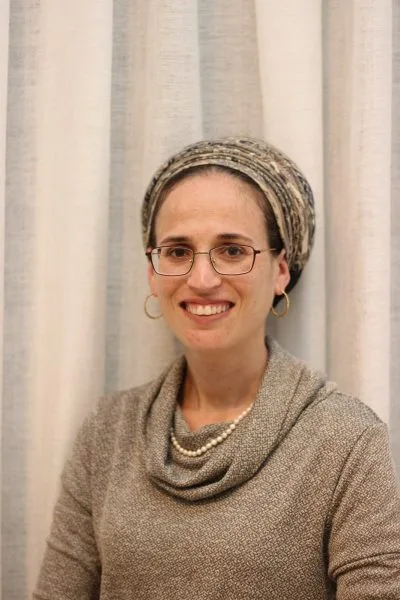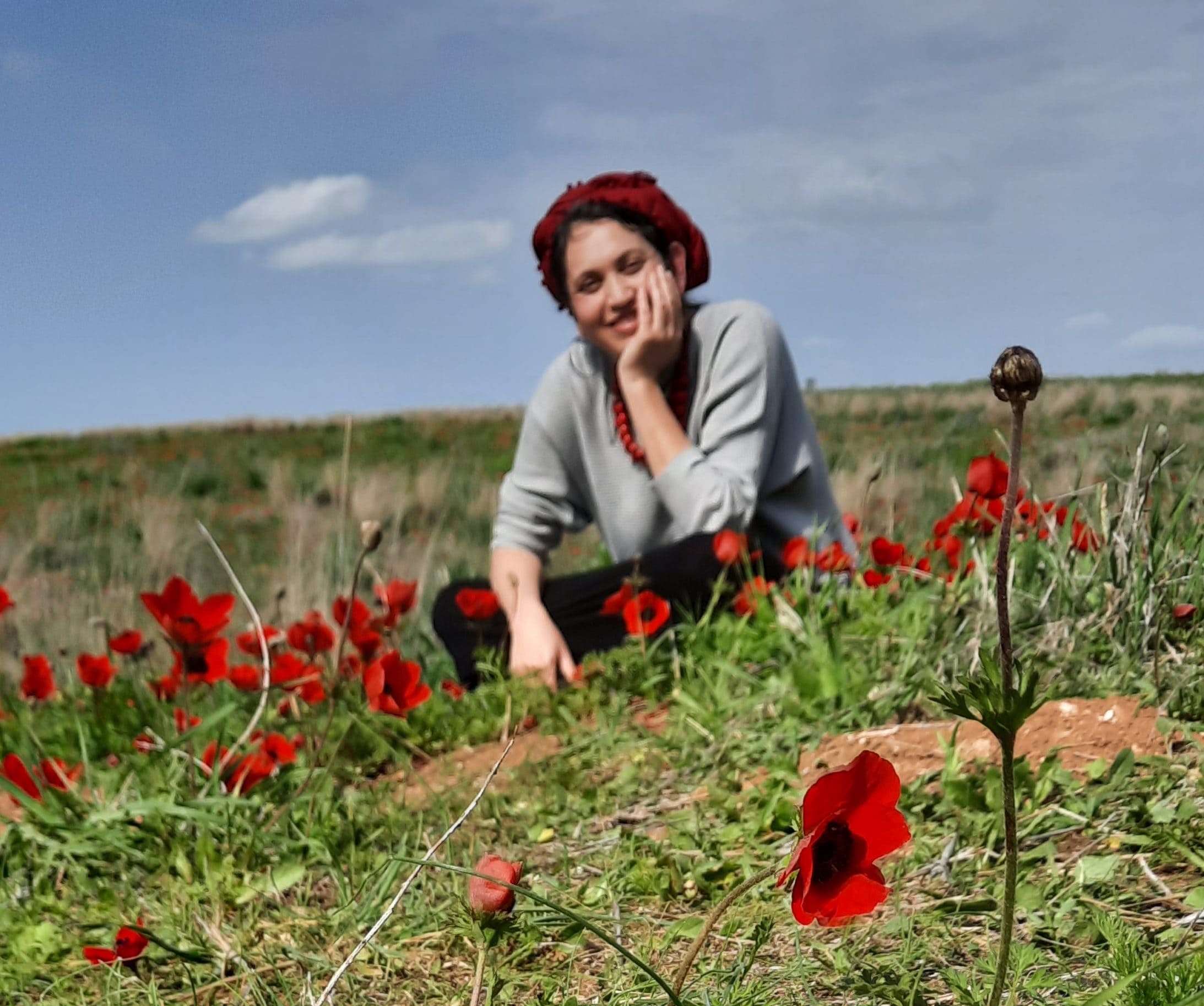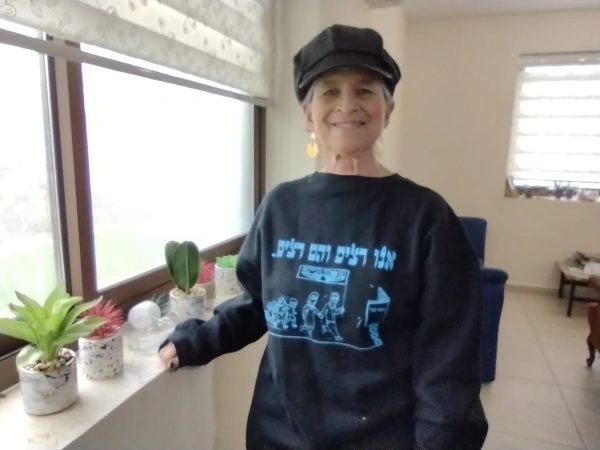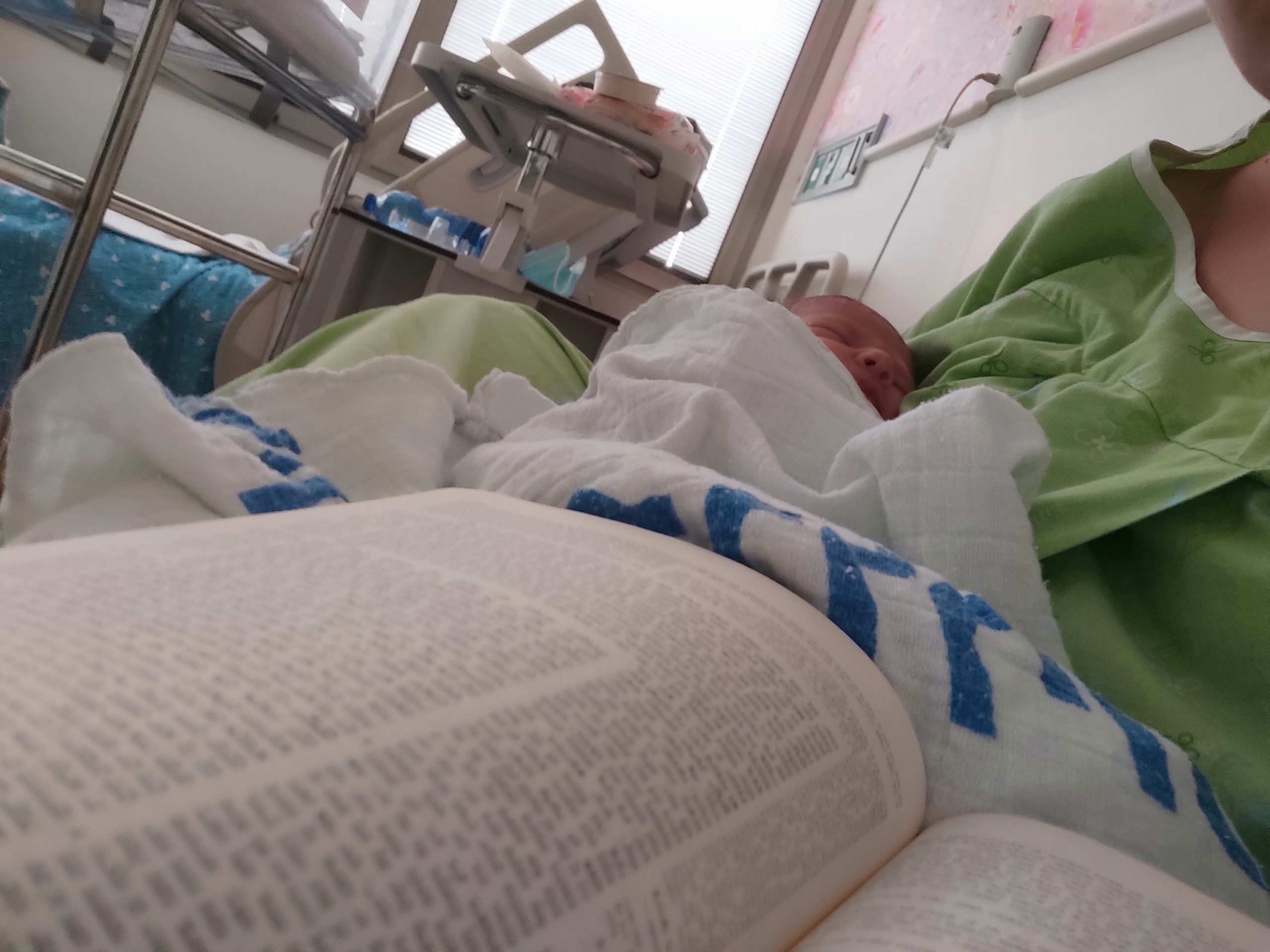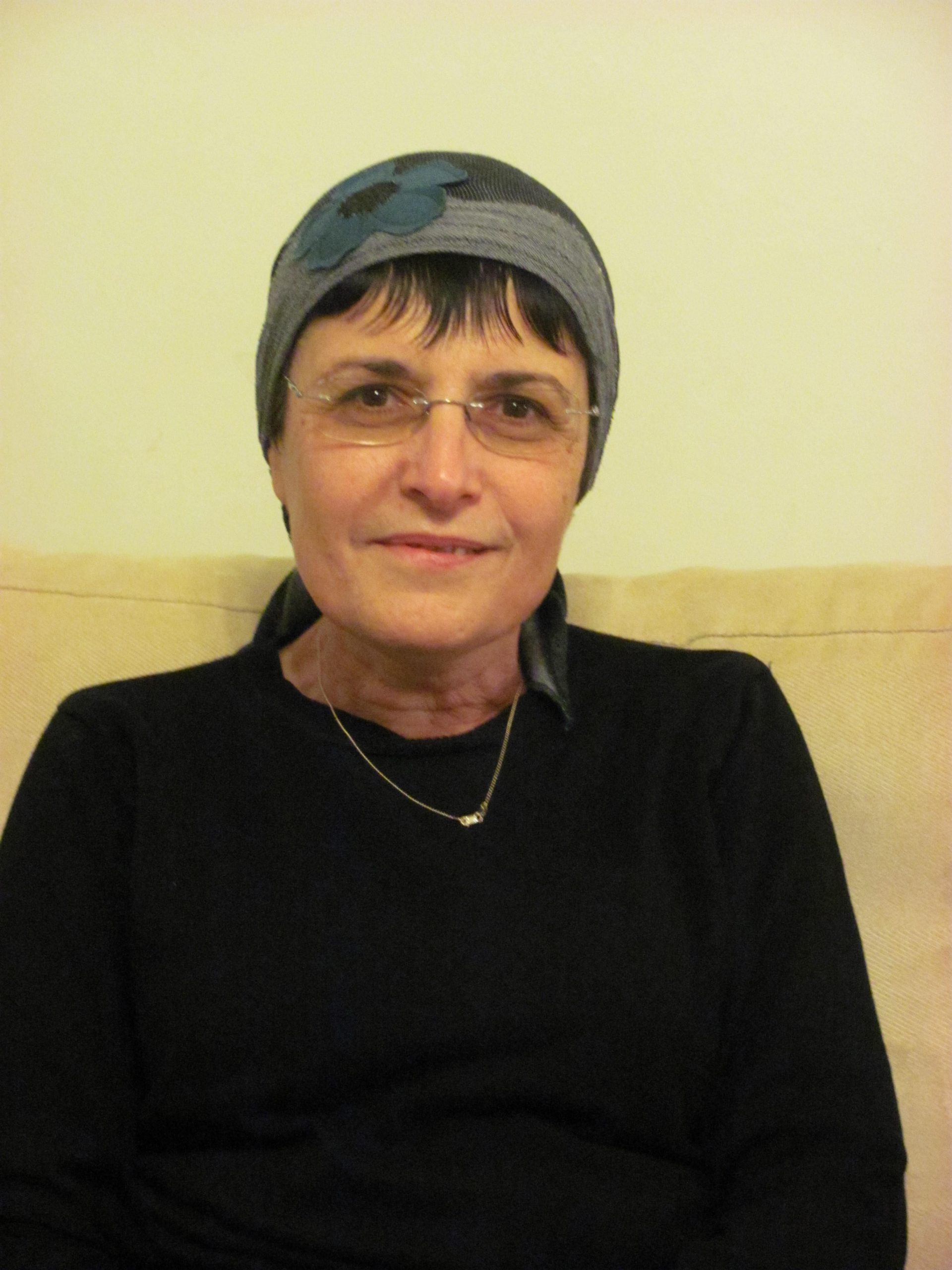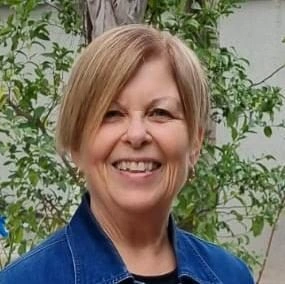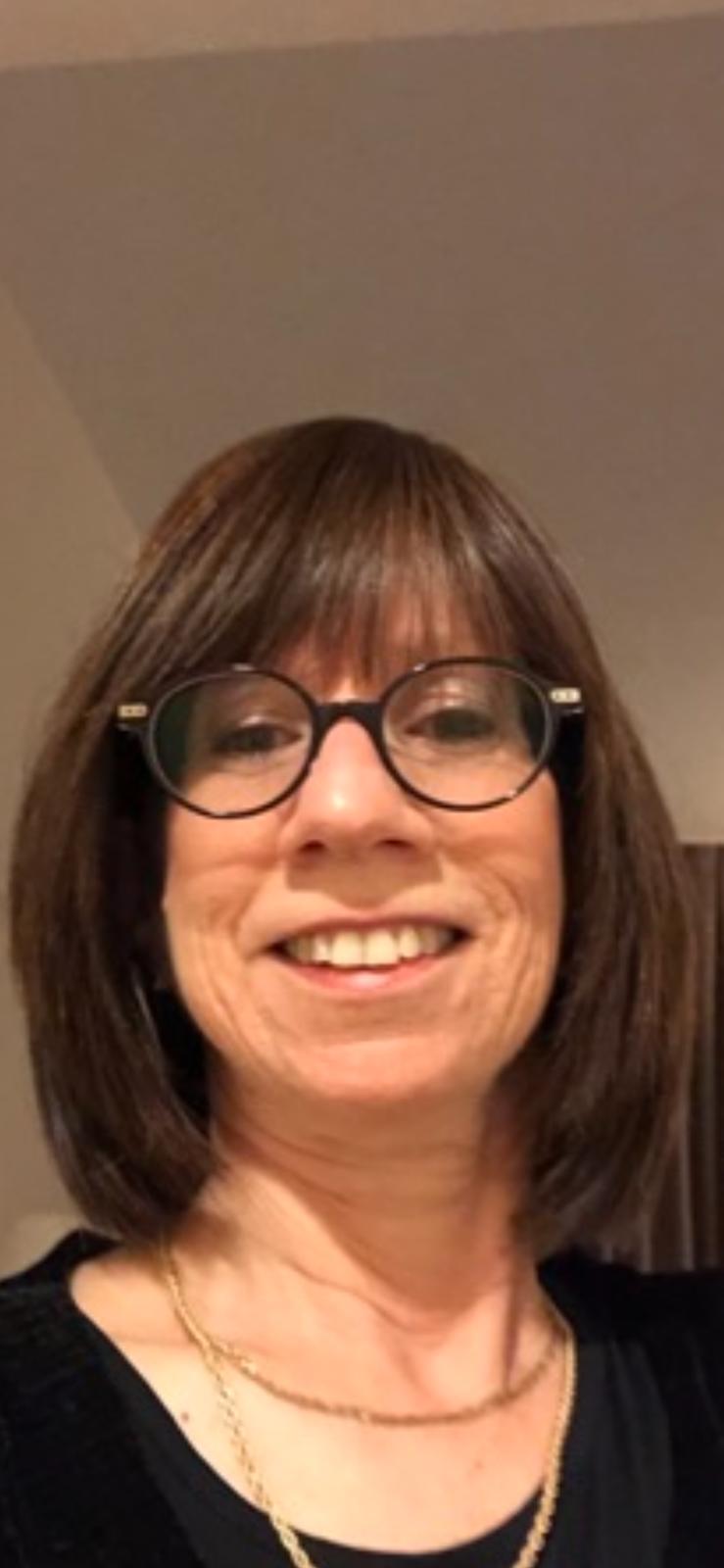מאיפה בדיוק מותר לשחוט את הקנה? מהן ההבדלים בין מליקה לשחיטה?
לימוד השבוע מוקדש ע”י טינה לם לע”נ יצחק מאיר בן הרב צבי אריה ואסתר בתיה.
רוצים להקדיש למידה? התחל כאן:
לימוד השבוע מוקדש ע”י טינה לם לע”נ יצחק מאיר בן הרב צבי אריה ואסתר בתיה.
העמקה
רוצה להבין מה באמת קורה מתחת לפני השטח של הסוגיה?
שיעורים, פודקאסטים והרחבות של מיטב המורות שלנו יפתחו לך עוד זוויות וכיווני חשיבה.
חדשה בלימוד הגמרא?
זה הדף הראשון שלך? איזו התרגשות עצומה! יש לנו בדיוק את התכנים והכלים שיעזרו לך לעשות את הצעדים הראשונים ללמידה בקצב וברמה שלך, כך תוכלי להרגיש בנוח גם בתוך הסוגיות המורכבות ומאתגרות.
פסיפס הלומדות שלנו
גלי את קהילת הלומדות שלנו, מגוון נשים, רקעים וסיפורים. כולן חלק מתנועה ומסע מרגש ועוצמתי.
חולין יט
והלכתא משיפוי כובע ולמטה כשרה והיינו דשייר בחיטי
The Gemara concludes: And the halakha is: If one slaughters from the incline of the thyroid cartilage and below in the direction of the windpipe, the slaughter is valid, and that is in accordance with the opinion that one who left part of the arytenoid cartilage has still performed a valid slaughter, as the arytenoids cartilage extends beyond this point.
רב נחמן אכשר משיפוי כובע ולמטה אמר ליה רב חנן בר רב קטינא לרב נחמן כמאן לא כרבנן ולא כרבי יוסי ברבי יהודה
The Gemara relates that Rav Naḥman deemed the slaughter valid in a case where one slaughtered from the incline of the thyroid cartilage and below. Rav Ḥanan bar Rav Ketina said to Rav Naḥman: In accordance with whose opinion is that ruling? It is neither in accordance with the opinion of the Rabbis nor in accordance with the opinion of Rabbi Yosei, son of Rabbi Yehuda, who both hold that if one cuts the windpipe above the large upper ring, the cricoid cartilage, the slaughter is not valid.
אמר ליה אנא לא חילק ידענא ולא בילק ידענא אנא שמעתא ידענא דא”ר חייא בר אבא א”ר יוחנן ואמרי לה א”ר אבא בר זבדא א”ר חנינא ואמרי לה א”ר יעקב בר אידי א”ר יהושע בן לוי משיפוי כובע ולמטה כשרה
Rav Naḥman said to him: Neither do I know Ḥillek nor do I know Billek, i.e., I know the reason neither for this one’s opinion nor for that one’s opinion. I know the halakha, as Rabbi Ḥiyya bar Abba says that Rabbi Yoḥanan says, and some say that Rabbi Abba bar Zavda says that Rabbi Ḥanina says, and some say that Rabbi Ya’akov bar Idi says that Rabbi Yehoshua ben Levi says: From the incline of the thyroid cartilage and below, the slaughter is valid.
ואריב”ל מוגרמת דרבנן כשרה לרבי יוסי בר’ יהודה
§ The Gemara returns to analyzing the baraita (18b): In a case where the knife is diverted from the place of slaughter above the ring, the slaughter is not valid. Rabbi Ḥanina ben Antigonus testified about a case where the knife is diverted from the place of slaughter above the ring that the slaughter is valid. And Rabbi Yehoshua ben Levi says: With regard to a case where the knife was diverted according to the opinion of the Rabbis cited in the mishna, the slaughter is valid according to the opinion of Rabbi Yosei, son of Rabbi Yehuda, who ruled that the slaughter is valid when the majority of the windpipe was cut within the large, upper ring.
ודרבי יוסי ברבי יהודה כשרה לרבי חנינא בן אנטיגנוס
And with regard to a case where the knife was diverted according to the opinion of Rabbi Yosei, son of Rabbi Yehuda, it is valid according to the opinion of Rabbi Ḥanina ben Antigonus, who ruled that even if a majority of the windpipe was cut outside the large upper ring, the slaughter is valid.
פשיטא מהו דתימא ר”ח בן אנטיגנוס אדרבנן קאי קא משמע לן
The Gemara objects: That is obvious. The Gemara explains: Lest you say that the statement of Rabbi Ḥanina ben Antigonus, who ruled that in a case where the knife is diverted from the place of slaughter above the ring it is valid, addresses the statement of the Rabbis and he agrees with the opinion of Rabbi Yosei, son of Rabbi Yehuda, that the slaughter is not valid when the majority of the windpipe was cut above the large upper ring, therefore, Rabbi Yehoshua ben Levi teaches us that this is not the case.
ואימא ה”נ א”כ העיד עליה מיבעי ליה והלכתא כר’ חנינא בן אנטיגנוס דקאי רב נחמן כוותיה
The Gemara objects: And say it is indeed so that Rabbi Ḥanina ben Antigonus agrees with Rabbi Yosei, son of Rabbi Yehuda. The Gemara responds: If so, the formulation of the baraita should have been: Rabbi Ḥanina ben Antigonus testified about it. Since the opinion of Rabbi Ḥanina ben Antigonus was introduced merely with the term: Testified, apparently he disagrees with all of the other opinions. The Gemara concludes: And the halakha is in accordance with the opinion of Rabbi Ḥanina ben Antigonus, as Rav Naḥman holds in accordance with his opinion.
אמר רב הונא אמר רב אסי מחלוקת בששחט שני שליש והגרים שליש דרבנן סברי כולה שחיטה בעינן בטבעת גדולה ורבי יוסי ברבי יהודה סבר רובו ככולו
§ The mishna cited a dispute between the Rabbis, who hold that in a case where one slaughtered within the large upper ring and did not leave a thread breadth over the entire surface of the ring, the slaughter is not valid, and Rabbi Yosei, son of Rabbi Yehuda, who hold that even if one left a thread breadth over a majority of the surface of the ring, the slaughter is valid. Apropos to that, Rav Huna said that Rav Asi says: The dispute is only in a case where one cut two-thirds of the windpipe within the ring and then diverted the knife upward toward the head of the animal and cut the remaining one-third, as the Rabbis hold that we require the entire slaughter to be performed within the large ring, and Rabbi Yosei, son of Rabbi Yehuda, holds: The halakhic status of its majority is like that of its entirety.
אבל הגרים שליש ושחט שני שליש דברי הכל פסולה דכי נפקא חיותא בעינן רובא בשחיטה וליכא
But if one diverted the knife upward toward the head of the animal, cut one-third of the windpipe, and then cut two-thirds within the ring, everyone agrees that the slaughter is not valid, as when the life left the animal, i.e., when the majority of the windpipe was cut, we require that the entire majority be cut by means of slaughter, and that is not so in this case.
א”ל רב חסדא אדרבה לימא מר איפכא מחלוקת כשהגרים שליש ושחט שני שליש דרבי יוסי ברבי יהודה סבר מידי דהוה אחצי קנה פגום
Rav Ḥisda said to Rav Huna: On the contrary, let the Master say the opposite. The dispute is only in a case when one diverted the knife upward toward the head of the animal, cut one-third of the windpipe, and then cut two-thirds within the ring, as Rabbi Yosei, son of Rabbi Yehuda, holds that the slaughter is valid just as it is in the case where half the windpipe is deficient. In that case, once the slaughterer cuts any additional part of the windpipe, the slaughter is valid because the cut that rendered a majority of the windpipe slaughtered was performed properly. So too in this case, since the cut of the second third was performed properly, the slaughter is valid.
ורבנן התם מקום שחיטה הכא לאו מקום שחיטה
And the Rabbis hold that there, in the case of the deficient windpipe, the deficiency was in the place of proper slaughter, and therefore most of the life of the animal left in the proper place. Here, the first third was cut while the knife was diverted, and therefore most of the life of the animal did not leave in the place of proper slaughter.
אבל שחט שני שליש והגרים שליש דברי הכל כשרה דהא תנן רובו של אחד כמוהו
But in a case where one cut two-thirds of the windpipe within the ring and then diverted the knife and cut the remaining one-third, everyone agrees that the slaughter is valid, as didn’t we learn in a mishna (27a): The halakhic status of the slaughter of the majority of one siman, the windpipe or the gullet, is like that of the slaughter of the entire siman itself?
א”ל רב יוסף מאן נימא לן דההוא רובא דהתם לאו רבי יוסי ברבי יהודה קתני לה דלמא רבי יוסי בר’ יהודה קתני לה
Rav Yosef said to Rav Ḥisda: Who will say to us that with regard to the mishna there concerning the majority of one siman, Rabbi Yosei, son of Rabbi Yehuda, did not teach it? Perhaps Rabbi Yosei, son of Rabbi Yehuda, taught it, and the Rabbis disagree.
אמר ליה אביי אטו כל רובי דעלמא רבי יוסי ברבי יהודה קתני להו אמר ליה אנא רובא דשחיטה קאמינא דשמענא להו דפליגי
Abaye said to Rav Yosef: Is that to say that with regard to all principles that address majorities in general, Rabbi Yosei, son of Rabbi Yehuda, taught them? Rav Yosef said to him: I am speaking of the principle of majority with regard to slaughter, as we heard that the Rabbis disagree with him.
לישנא אחרינא אמרי לה אמר רב הונא אמר רב אסי מחלוקת שהגרים שליש ושחט שני שליש דרבי יוסי בר ר’ יהודה סבר מידי דהוה אחצי קנה פגום ורבנן התם מקום שחיטה הכא לאו מקום שחיטה
Some say that there is an alternative version of this discussion: Rav Huna said that Rav Asi says: The dispute is only in a case where one diverted the knife upward toward the head of the animal, cut one-third of the windpipe, and then cut two-thirds within the ring, as Rabbi Yosei, son of Rabbi Yehuda, holds that the slaughter is valid just as it is in the case where half the windpipe is deficient, and the Rabbis hold that there, in the case of the deficient windpipe, the deficiency was in the place of proper slaughter, but here, most of the life of the animal did not leave in the place of proper slaughter.
אבל שחט שני שליש והגרים שליש דברי הכל כשרה דהא תנן רובו של אחד כמוהו
But in a case where one cut two-thirds of the windpipe within the ring and then diverted the knife and cut the remaining one-third, everyone agrees that the slaughter is valid, as didn’t we learn in a mishna (27a): The halakhic status of the slaughter of the majority of one siman, the windpipe or the gullet, is like that of the slaughter of the entire siman itself?
מתקיף לה רב חסדא מאן לימא לן דההוא רובא דהתם לאו רבי יוסי ברבי יהודה קתני לה דלמא רבי יוסי ברבי יהודה קתני לה א”ל רב יוסף אטו כל רובי דעלמא רבי יוסי ברבי יהודה קתני להו אמר ליה אנא רובא דשחיטה קאמינא דשמענא להו דפליגי
Rav Ḥisda objects to this: Who will say to us that with regard to the mishna there concerning the majority of one siman, Rabbi Yosei, son of Rabbi Yehuda, did not teach it? Perhaps Rabbi Yosei, son of Rabbi Yehuda, taught it, and the Rabbis disagree. Rav Yosef said to Rav Ḥisda: Is that to say that with regard to all principles that address majorities in general, Rabbi Yosei, son of Rabbi Yehuda, taught them? Rav Ḥisda said to him: I am speaking of the principle of majority with regard to slaughter, as we heard that the Rabbis disagree with him.
הגרים שליש ושחט שליש והגרים שליש רב הונא אמר רב כשרה רב יהודה אמר רב טרפה רב הונא אמר רב כשרה כי נפקא חיותא בשחיטה קא נפקא רב יהודה אמר רב טרפה בעינן רובא בשחיטה וליכא
§ If one diverted the knife and cut one-third of the windpipe, and then cut one-third properly, and then diverted and cut the final one-third, Rav Huna says that Rav says: The slaughter is valid. Rav Yehuda says that Rav says: The animal is a tereifa, i.e., forbidden. Rav Huna says that Rav says: The slaughter is valid, as when the life left the animal, it was in the course of a valid slaughter that it left. Rav Yehuda says that Rav says: The animal is a tereifa, as we require a majority of the windpipe to be cut with valid slaughter,and that is not the case.
שחט שליש והגרים שליש ושחט שליש רב יהודה אמר רב כשרה אתו שיילוה לרב הונא אמר להו טרפה שמע רב יהודה איקפד אמר טריפנא ומכשר ומכשרנא טריף אמר רב הונא שפיר קא מיקפד חדא איהו שמיע ליה מיניה דרב ואנא לא שמיע לי ועוד האיכא רובא בשחיטה
If one cut one-third of the windpipe properly, and then diverted the knife and cut one-third, and then cut the final one-third of the windpipe properly, Rav Yehuda says that Rav said: The slaughter is valid. When the Sages came and asked Rav Huna, he said to them: It is a tereifa. Rav Yehuda heard the ruling of Rav Huna, and he was angry. He said: I deem it a tereifa and he deems the slaughter valid, and I deem the slaughter valid and he deems it a tereifa. Rav Huna said: It is proper that he was angry. One reason is that he heard it from Rav and I did not hear it from Rav; and furthermore, isn’t there the majority of the siman that was cut with valid slaughter?
א”ל רב חסדא לא תהדר בך
Rav Ḥisda said to Rav Huna: Do not retract your statement,
דא”כ מפסדת לה לקמייתא התם מ”ט קא מכשרת דכי נפקא חיותא בהכשירה קא נפקא הכא נמי כי נפקא חיותא בהגרמה קא נפקא
as, if you retract your statement, you repudiate the first ruling that you stated with regard to a case where one diverted the knife and cut one-third of the windpipe, and then cut one-third properly, and then diverted and cut the final one-third. There, what is the reason that you deemed the slaughter valid? The reason is that when life left the animal with the cutting of the second third of the windpipe, it left the animal in the course of valid slaughter. Based on that reasoning, here too, when life left the animal with the cutting of the second third of the windpipe, it left the animal in the course of diverting the knife, and the slaughter is invalid.
איקלע רב נחמן לסורא בעו מיניה שחט שליש והגרים שליש ושחט שליש מהו אמר להו לאו היינו דר’ אלעזר בר מניומי דא”ר אלעזר בר מניומי שחיטה העשויה כמסרק כשרה
Rav Naḥman happened to come to Sura, where they asked him: If one cut one-third of the windpipe properly, and then diverted the knife and cut one-third, and then cut the final one-third of the windpipe properly, what is the halakha? He said to them: Isn’t that the halakha stated by Rabbi Elazar bar Minyumi, as Rabbi Elazar bar Minyumi says: Slaughter that is performed like the teeth of a comb, which are jagged, is valid.
ודלמא במקום שחיטה במקום שחיטה מאי למימרא מהו דתימא בעינן שחיטה מפורעת וליכא קמ”ל
The Gemara objects: And perhaps Rabbi Elazar bar Minyumi stated his halakha only when the slaughter goes up and down within the proper place of slaughter. The Gemara asks in response: Within the proper place of slaughter, what is the purpose of stating it? Clearly the slaughter is valid in that case. The Gemara explains: Lest you say that we require slaughter that is clear and straight, and slaughter that is jagged is not straight, therefore, Rabbi Elazar bar Minyumi teaches us that nevertheless, the slaughter is valid.
(סימן בכ”ד)
The Gemara cites a mnemonic for the order of the Sages in the following discussion: Beit for Rabbi Abba; kaf for Rav Kahana; dalet for Rav Yehuda.
יתיב רבי אבא אחוריה דרב כהנא ויתיב רב כהנא קמיה דרב יהודה ויתיב וקאמר שחט שליש והגרים שליש ושחט שליש מהו א”ל שחיטתו כשרה
Rabbi Abba sat behind Rav Kahana and Rav Kahana sat before Rav Yehuda, and he sat and said to Rav Yehuda: If one cut one-third of the windpipe properly, and then diverted the knife and cut one-third, and then cut the final one-third of the windpipe properly, what is the halakha? Rav Yehuda said to Rav Kahana: His slaughter is valid.
הגרים שליש ושחט שליש והגרים שליש מהו א”ל שחיטתו פסולה
Rav Kahana then asked: If one diverted the knife and cut one-third of the windpipe, and then cut one-third properly, and then diverted and cut the final one-third, what is the halakha? Rav Yehuda said to him: His slaughter is not valid.
שחט במקום נקב מהו א”ל שחיטתו כשרה
Rav Kahana then asked: If one cut in a place where there was a perforation in the front of the windpipe and continued cutting, what is the halakha? Rav Yehuda said to him: His slaughter is valid.
שחט ופגע בו נקב מהו א”ל שחיטתו פסולה
Rav Kahana further asked: If one cut the windpipe and after cutting half the windpipe encountered a perforation, after which point a majority of the windpipe had been cut, what is the halakha? Rav Yehuda said to him: His slaughter is not valid.
אזל רבי אבא אמרה קמיה דר’ אלעזר אזל ר”א אמרה קמיה דר’ יוחנן א”ל מאי שנא
Rabbi Abba went to Eretz Yisrael and stated these halakhot in the presence of Rabbi Elazar, and Rabbi Elazar went and stated these halakhot in the presence of Rabbi Yoḥanan. Rabbi Yoḥanan said to him: What is different about a case where one cut in a place where there was a perforation relative to a case where he encountered a perforation in the middle of the slaughter?
א”ל שחט במקום נקב נעשה כמי ששחט עובד כוכבים וגמר ישראל שחט ופגע בו נקב נעשה כמי ששחט ישראל וגמר עובד כוכבים קרי עליה עובד כוכבים עובד כוכבים
Rabbi Elazar said to him: In a case where one cut in a place where there was a perforation, it becomes like an animal that a gentile began to slaughter and a Jew completed its slaughter, in which case the slaughter is valid. In a case where one cut the windpipe and encountered a perforation, it becomes like an animal that a Jew began to slaughter and a gentile completed its slaughter, in which case the slaughter is not valid. Rabbi Yoḥanan mockingly proclaimed about him: Gentile, gentile, i.e., you merely repeat something about gentiles. Rabbi Yoḥanan did not accept the distinction.
אמר רבא שפיר קרי עליה עובד כוכבים עובד כוכבים בשלמא התם מדהוה ליה לישראל למשחט רובא ולא שחט כי נפקא חיותא בידא דעובד כוכבים קא נפקא אלא הכא מכדי משחט שחיט מה לי במקום נקב מה לי פגע בו נקב:
Rava said: Rabbi Yoḥanan did well when he proclaimed about him: Gentile, gentile. Granted, there, in the case where the gentile completed the slaughter, since a Jew was supposed to cut a majority of the windpipe and he did not cut it, when life left the animal it left by the hand of a gentile. But here, after all, he was the one who slaughtered the entire animal, and the animal was not a tereifa until this point, and so what difference is there to me if one began to cut in a place where there was a perforation and what difference is there to me if he encountered a perforation?
מתני׳ השוחט מן הצדדין שחיטתו כשרה המולק מן הצדדין מליקתו פסולה השוחט מן העורף שחיטתו פסולה המולק מן העורף מליקתו כשירה השוחט מן הצואר שחיטתו כשרה המולק מן הצואר מליקתו פסולה שכל העורף כשר למליקה וכל הצואר כשר לשחיטה נמצא כשר בשחיטה פסול במליקה כשר במליקה פסול בשחיטה:
MISHNA: One who slaughters from the sides of the throat, his slaughter is valid. One who pinches the neck of a bird offering from the sides, his pinching is not valid.One who slaughters from the nape [oref] of the neck, his slaughter is not valid. One who pinches a bird offering from the nape of the neck, his pinching is valid. One who slaughters from the throat, his slaughter is valid. One who pinches a bird offering from the throat, his pinching is not valid, as the entire nape is valid for pinching and the entire throat is valid for slaughter. It is found that that which is valid for slaughter is not valid for pinching and that which is valid for pinching is not valid for slaughter.
גמ׳ מאי עורף אילימא עורף ממש מאי אריא שוחט אפילו מולק נמי (ויקרא ה, ח) ממול ערפו אמר רחמנא ולא ערפו אלא מאי עורף ממול עורף כדקתני סיפא כל העורף כשר למליקה
GEMARA: With regard to the statement in the mishna: One who slaughters an animal from the oref, its slaughter is not valid, the Gemara asks: What is the meaning of oref? If we say that the reference is to the actual occipital bone at the rear of the skull, why does this halakha apply specifically to one who slaughters from the oref? Even if one pinches a bird offering from the oref it would also not be valid, as the Merciful One states: “Pinch off its head adjacent to its oref” (Leviticus 5:8), at the nape beneath the occipital bone, and not its oref. Rather, what is the oref mentioned in the mishna? It is adjacent to the oref, the back of the neck below the occipital bone, as it is taught in the latter clause of the mishna: The entire nape is valid for pinching.
מנהני מילי דתנו רבנן ממול ערפו מול הרואה את העורף וכן הוא אומר (במדבר כב, ה) והוא יושב ממולי ואומר (ירמיהו ב, כז) כי פנו אלי עורף ולא פנים מאי ואומר וכי תימא עורף גופיה לא ידעינן היכא דנדע מול דידיה היכא תא שמע כי פנו אלי עורף ולא פנים מכלל דעורף להדי פנים
The Gemara asks: From where are these matters derived? They are derived as the Sages taught in a baraita: In the phrase “adjacent to [mimmul] its oref,” adjacent means a place that sees the oref and not the oref itself. And likewise, the verse states: “And they reside adjacent to me [mimmuli]” (Numbers 22:5); and the verse states: “For they have turned their oref unto Me, and not their face” (Jeremiah 2:27). The Gemara asks: What is added by the latter proof, introduced with the term: And the verse states? The Gemara answers: And if you would say, we do not know where the oref itself is, so that we will know where adjacent to it is, come and hear: “For they have turned their oref unto Me, and not their face,” from which it may be ascertained by inference that the oref is opposite the face, at the rear of the head.
אמרי בני ר’ חייא מצות מליקה מחזיר סימנים לאחורי העורף ומולק איכא דאמרי אף מחזיר ואיכא דאמרי מחזיר דוקא
§ The sons of Rabbi Ḥiyya say: How is the mitzva of pinching of a bird offering performed? One moves the two simanim that must be severed in ritual slaughter, i.e., the windpipe and the gullet, behind the nape and pinches. There is a dispute among the Sages with regard to the meaning of the statement. There are those who say: The mitzva ab initio is to pinch through the spinal column first and then pinch the windpipe and the gullet, and one may even move the simanim to behind the nape and pinch. And there are those who say: The mitzva is specifically to move the simanim behind the nape and pinch.
ומסתברא כמאן דאמר אף מחזיר ממאי מדקתני השוחט מן העורף שחיטתו פסולה המולק מן העורף מליקתו כשרה
The Gemara notes: And it is reasonable according to the one who says: One may even move the simanim behind the nape. From where does one draw that conclusion? It is from the fact that the mishna teaches: One who slaughters from the nape of the neck, his slaughter is not valid. One who pinches from the nape of the neck, his pinching is valid.



















